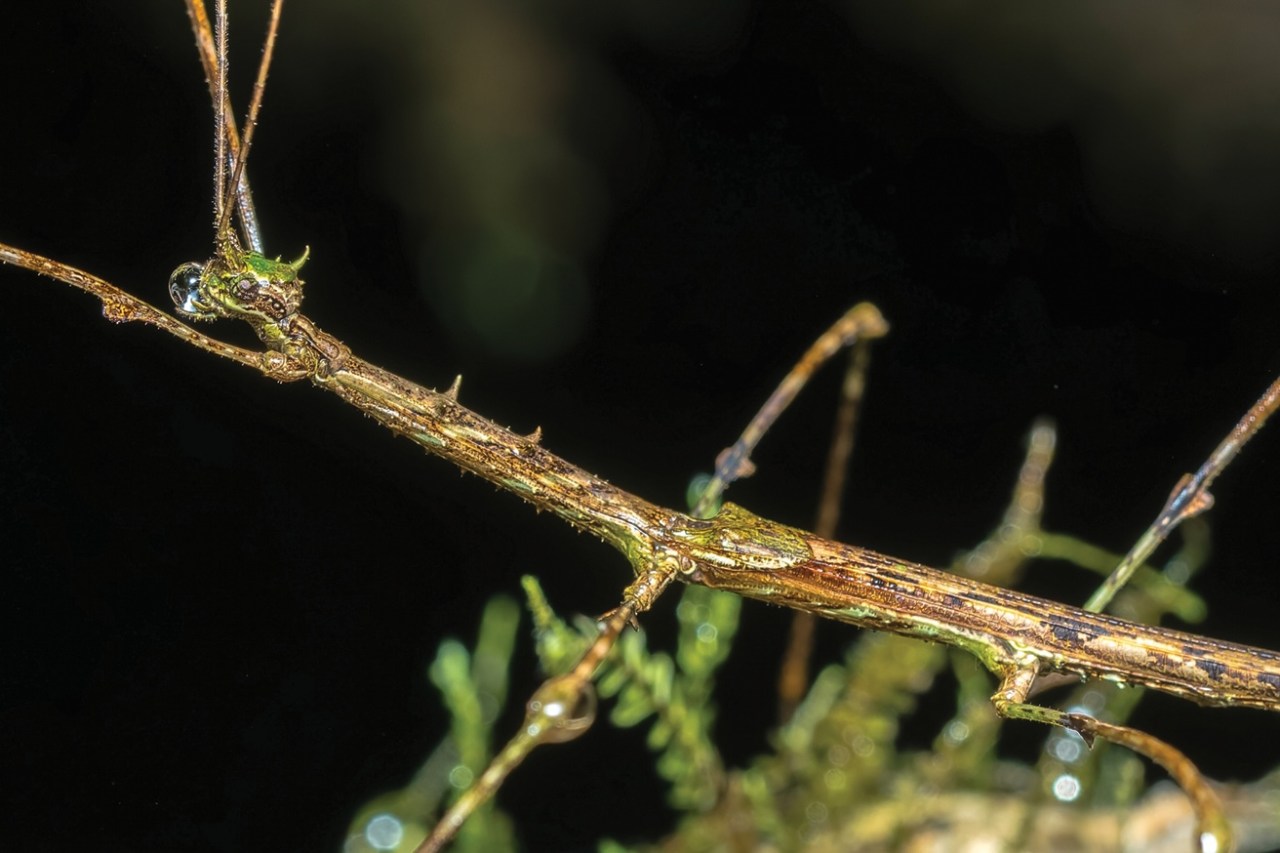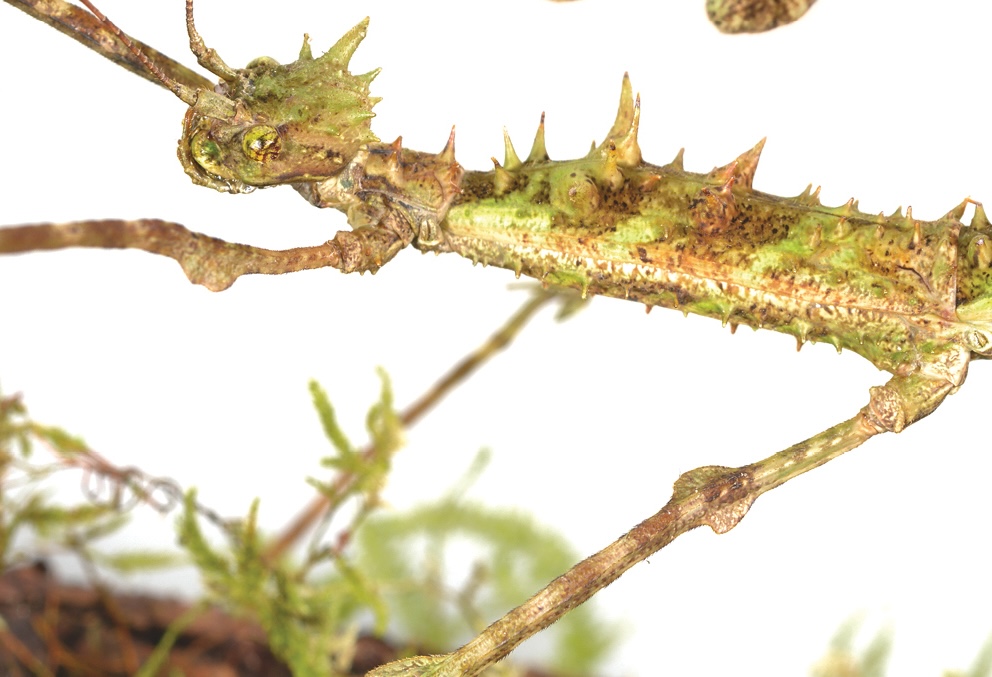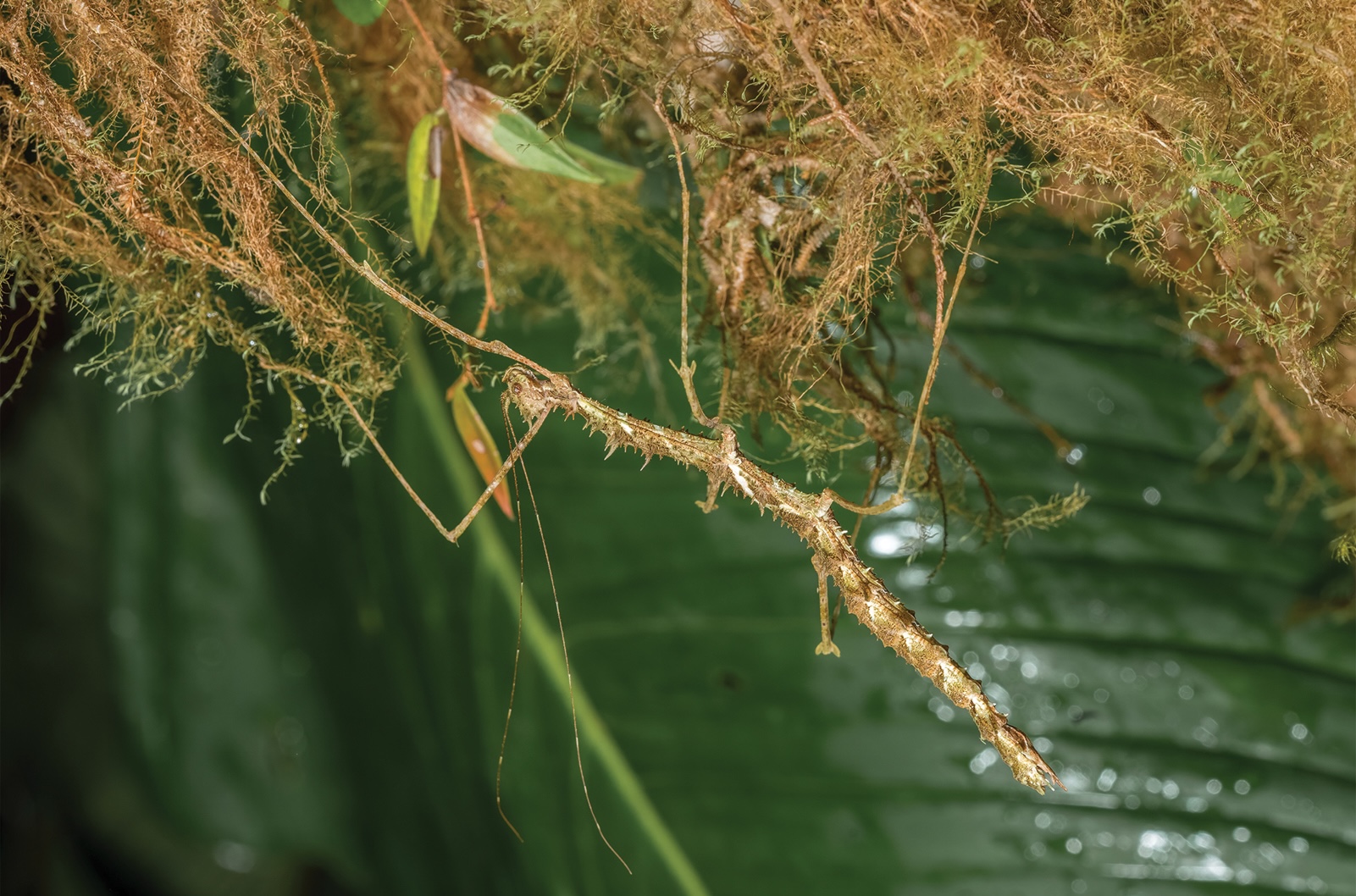A new mossy stick insect was spotted flaunting its figure in the moist, mossy Chocó forests of northwestern Ecuador.
The new species, dubbed Trychopeplus mashpiensis in a new paper in ZooKeys, was photographed dangling from a curtain of moss, looking confident in the wake of her sudden stardom.
The female in question (age unknown) appeared to be in high spirits as it casually posed for the camera.

The mossy stick insect emerged later that day looking nearly unrecognizable in the first sighting since her first-ever sighting earlier that morning.
She remained under the radar, camouflaging her three-inch brown-and-green body while still highlighting the abundance of spines on her thorax as she perched atop a wet, mossy stick.
The wet, mossy stick also stunned in this new photo.

Not to be outdone, a nearby male stick insect T. mashpiensis also appeared on a nearby stick. He did not appear to know the female sighted earlier, or perhaps the two were keeping their distance from each other to avoid rumors.
His spines are much smaller than the female's, so much so that the researchers deemed them "small protuberances rather than spines."
But this did not seem to dampen his spirits, as he looked comfortable in his brownish, stick-shaped body, which he paired with long antennae. He made up for this lack of ornamentation with a well-chosen accessory of a water droplet (brand unknown).

The A-list stick insect in the genus Trychopeplus is Trychopeplus laciniatus, an extremely ornamented creature that some critics have suggested could be "the terrestrial equivalent of a leafy sea dragon." T. laciniatus has long been accustomed to the trappings of celebrity life, dining exclusively on orchids that grow without soil, instead taking in water and nutrients from the rain and air.

Although the T. mashpiensis stick insects were photographed resting on epiphytic mosses, none were observed feeding, leaving their dining preferences currently unknown. There is no Carbone in the Chocó forest, fortunately.
Stick insects in the genus Trychopeplus are famous recluses. Scientists have never observed males of the species T. spinosolobatus and T. thaumasius. But sources say they exist, and are out there.

The female T. mashpiensis sported lime-green eyes, perhaps in a reference to British singer Charli XCX's sixth studio album "Brat," which became the summer's hottest word.
In the words of Charli, "brat" refers to a "girl who is a little messy and likes to party and maybe says some dumb things sometimes. Who feels herself but maybe also has a breakdown. But kind of like, parties through it, is very honest, very blunt. A little bit volatile. Like, does dumb things. But it’s brat. You’re brat. That’s brat."
It is unclear if the male T. mashpiensis insects, which are more brown than green, were serving "brat."
Only time will tell if T. mashpiensis can make the most of its 15 minutes and secure a future in the limelight. Neither of the insects, which were preserved in ethanol and subsequently stored in a zoological museum, could be reached for comment.






